Google Nexus 9: Preliminary Findings
by Joshua Ho on November 3, 2014 1:00 PM ESTGPU Performance
Following along the same lines, we can also take a look at the GPU performance of Tegra13x in the Nexus 9. This really shouldn’t change too much though as the same GPU is used at the same maximum clock speed of 852 MHz. For those that are unfamiliar with the GPU in the Tegra K1, this is effectively a scaled-down version of their desktop Kepler GPUs.

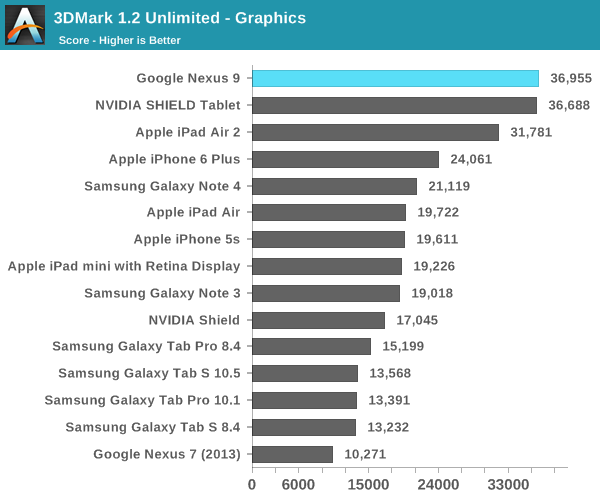
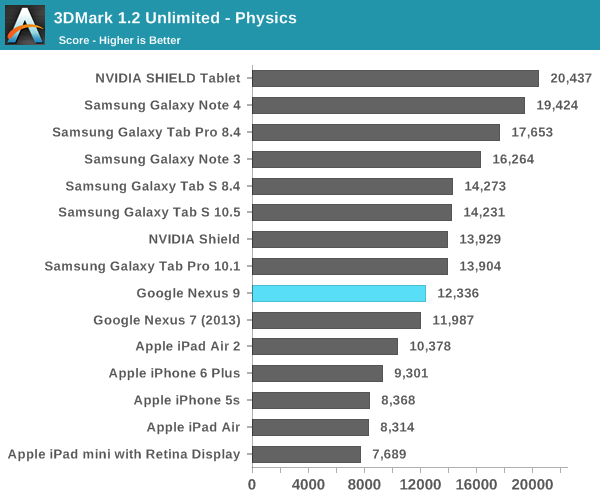
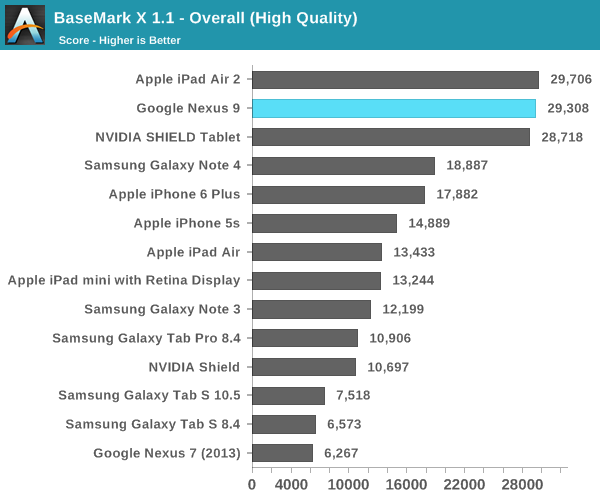
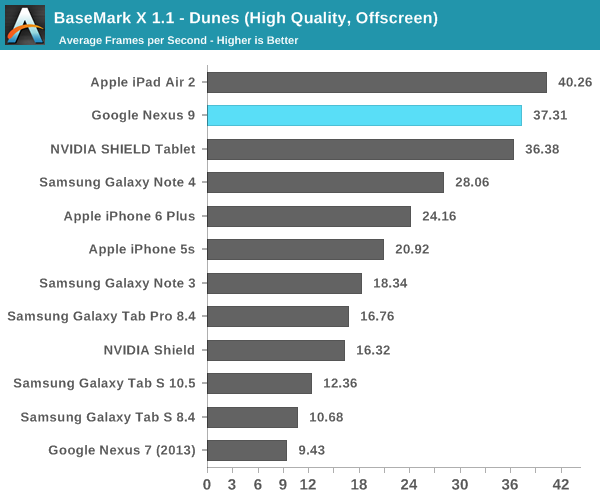
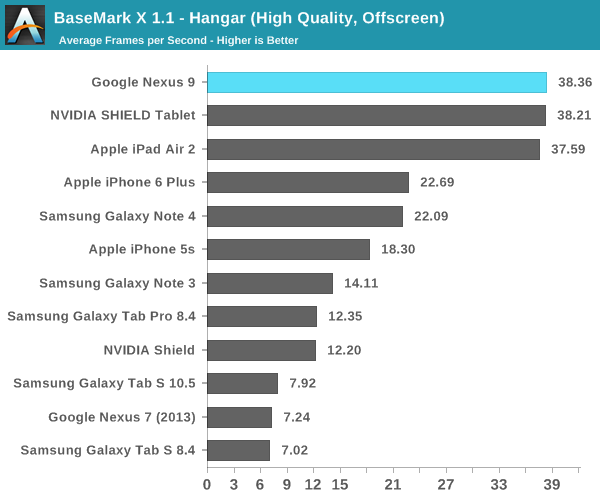
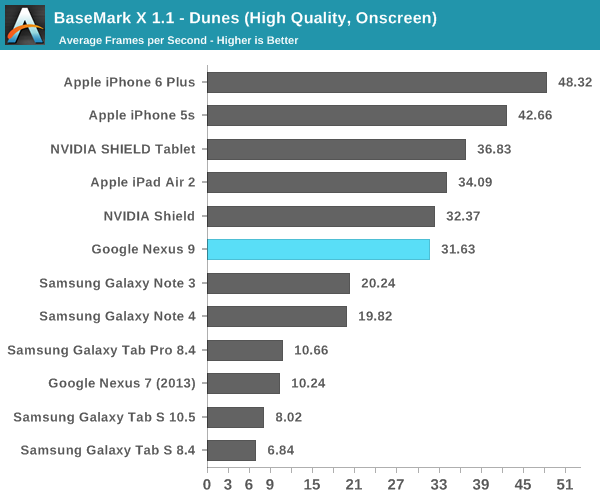

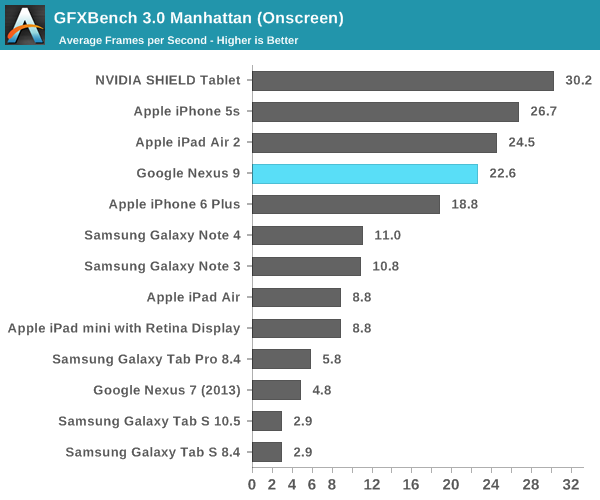
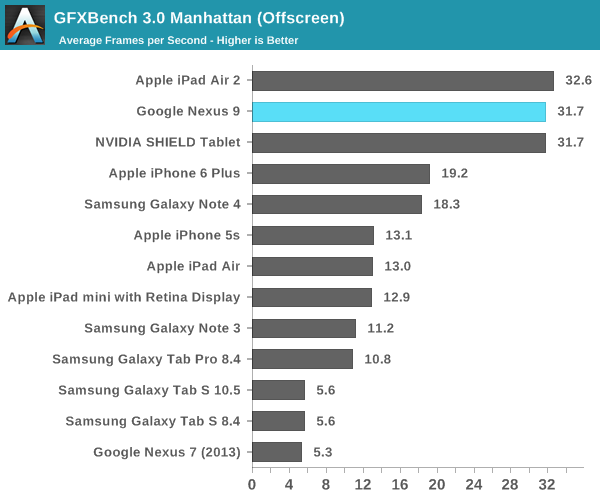
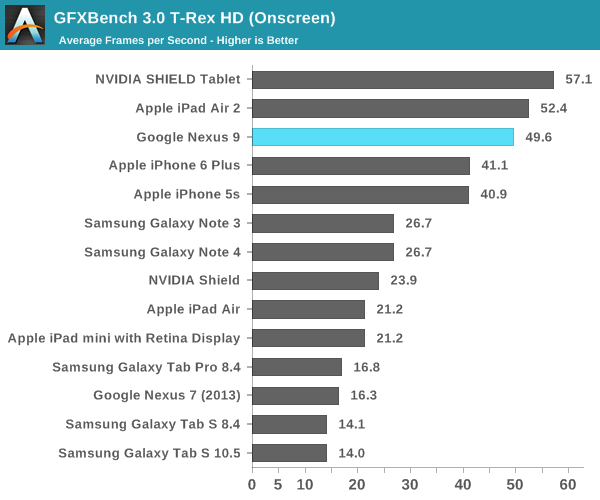
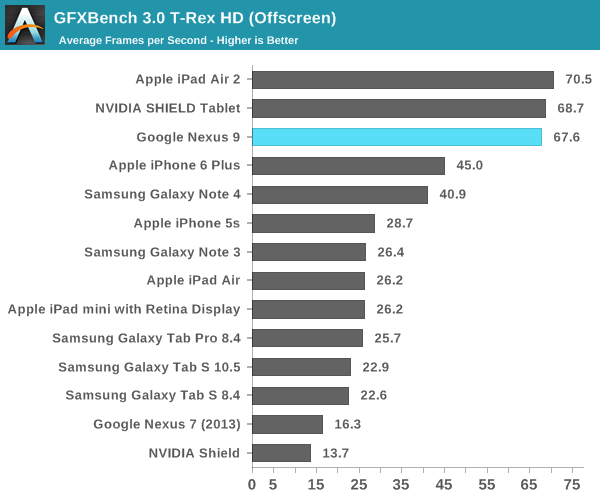
As one can see, the Nexus 9 is effectively equivalent to the SHIELD Tablet in GPU performance. The one anomaly here is 3DMark, which seems to be mostly due to differences in CPU. It's likely that this isn't representative of performance though, as 3DMark's physics test seems to perform better on CPU configurations that rely on larger numbers of cores and higher clock speeds. In the purer GPU tests like Basemark X and GFXBench performance across the board is effectively identical to the Cortex A15 variant of the Tegra K1.
Initial Conclusions
For the most part, the Nexus 9 shows some level of promise as a tablet. While Denver in NVIDIA’s Tegra K1 is a bit bimodal in performance, with sufficient optimization it has immense promise from a sheer performance aspect. While the SoC alone makes the Nexus 9 a fascinating device to look at, the rest of the package has a great deal of potential. The minimalistic design of the device, combined with good material design and stereo front-facing speakers really shows the high-end aspirations of this tablet. While we haven't received anything in the way of accessories, the keyboard folio case seems to be a way of pushing the tablet formfactor in a new direction. This is especially evident when seeing the focus on previous Nexus tablets which seemed to assume touch-only input.
While only a first look, there’s definitely a lot to be impressed by here. However, it will take a full review to really determine whether the Nexus 9 can compete with the iPad Air 2 as a tablet is more than just a function of battery life and SoC performance. In addition, it's hard to draw any real conclusions about this tablet quite yet as the software we received in no way represents a shipping build. Even if inactive, loggers and debug tools generally reduce performance, and it's likely that a great deal of optimization has occurred in the two months since this software build was completed. Once again, we haven't been able to get a newer build, but the full review should be done with shipping firmware.










146 Comments
View All Comments
eiriklf - Monday, November 3, 2014 - link
That is, the optimizations seem to be architecture specific.Krysto - Monday, November 3, 2014 - link
What I'd like to know - is the tablet actually taking advantage of the 64-bit/Aarch64 mode? Or is it running in 32-bit mode still? Because I think it was still running in 32-bit mode in early Geekbench tests. I don't know why Google would release it like that, but it would be disappointing if they did, since that could be cutting its CPU performance by 10-20 percent.Aenean144 - Monday, November 3, 2014 - link
Is it really a guarantee that 64-bit performance will be better than 32-bit performance with a VLIW architecture?The performance is going to be highly dependent on how well the code morpher can pack instructions into a VLIW instruction. So, if the VLIW instruction is 256 bits wide, does that mean it can only pack half the 64-bit instructions?
Andrei Frumusanu - Monday, November 3, 2014 - link
It's running on a 64 bit kernel.kron123456789 - Monday, November 3, 2014 - link
But apps(benchmarks included) aren't 64 bit.Marcos Stein - Monday, November 3, 2014 - link
64bit optimization will not save it.http://arstechnica.com/gadgets/2014/11/nexus-9-rev...
kron123456789 - Monday, November 3, 2014 - link
1) It's not final firmware on Nexus 9.2) It's pre-alpha (or something) build of 64-bit Geekbench.
We'll see when the final version of 64-bit Geekbench will be released.
AnandTechUser99 - Monday, November 3, 2014 - link
I would wait until these benchmarks can test AArch64 for Android before jumping to a conclusion on performance.Any chances of seeing performance in GFXBench 4.0? Or is that not ready yet?
All of these GPU benchmarks test OpenGL ES 2.x or 3.x performance, which misses the point of Tegra K1.
Marcos Stein - Monday, November 3, 2014 - link
Gfxbench's results posted here were very generous.Nexus 9's Gfxbench onscreen results has only 2048x1440. The results will be worse when Gfxbench update the software to process 2048x1536 (196608 more pixels).
The same happened with Iphone 6
Fidelator - Monday, November 3, 2014 - link
Seems pretty competitive with the Air 2 all around, what about some display calibration details? Those would be greatly apprecitedNow, the real catch will be next year, when we get quad core Denver + a Maxwell GPU on a 20nm process, they were able to match the A8X in pretty much everything but some CPU bound tests with a bigger process
Still, after seeing these results the display calibration and speaker sound quality will determine if I get it or not